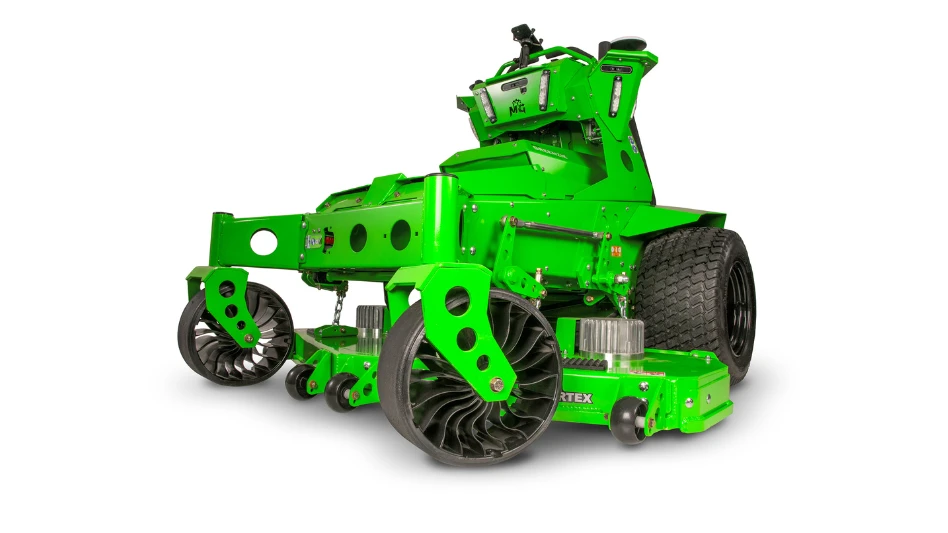While many lawn care operators (LCOs) and landscape contractors know that dgree-day information and biological calendars can help them proactively manage plant care by tracking certain environmental conditions’ effects on landscape plants and pests, the majority of contractors do not know how to use this helpful information.
In his presentation at the Central Environmental Nursery Trade show held in Columbus, Ohio, Jan. 26-28, Dan Herms associate professor of entomology, Ohio State University, Columbus, Ohio, remedied that problem in his informative session "Clearing the Mystery of Degree-Days and Biological Calendars."
DEGREE-DAYS DEFINED. "Pest management is tied directly to pest life cycles," Herms says. "Because of this, properly timing pest management efforts is everything. Degree-day information can help us predict pest development so we can make more culturally-based pest management decisions and make those decisions sooner."
By definition, a degree-day (also known as growing degree-days, thermal units or heating units) is the amount of heat accumulated above a specified base temperature over a 24-hour day. Tracking temperatures is key when it comes to pest life cycles because of what Herms calls "temperature-dependent development." "Because insects emerge and plants bloom sooner in warmer seasons than they do in cooler seasons, tracking temperature and weather patterns is the first step in accumulating degree-day information," he says.
But how is that data calculated? Herms explains that first specifying a base temperature is necessary for degree-days to have meaning. Ideally, this temperature is lower than the "lower temperature threshold," or LTT, required for specific pests to develop. For example, entomologists know that gypsy moths hatch in mid-April with an LTT of 48 F. From that point, gypsy moth development occurs as the temperature rises. "The LTT is known for a small number of species," Herms notes, "but we know that 50 F is a good approximation, so we often use that as our base temperature."
CRUNCHING NUMBERS. Herms explains three different methods of calculating degree-days, using the base temperature (50 F), as well as the maximum and minimum temperatures for a given day.
1. Average Method. This method simply subtracts the base temperature from the day’s average temperature. On a day with a high of 65 F and a low of 45 F, the average temperature would be 55 F. Subtracting the base temperature (50 F) leaves five degree-days.
2. Modified Average Method. When the minimum temperature drops below the base temperature, substitute the base temperature for the minimum temperature. "This method is generally more accurate than the Average Method because pests don’t get younger as the temperature drops," Herms says. "In our first example, the base temperature is 50 F, but the minimum temperature is 45 F. In that five-degree difference, there is no development occurring, so we can substitute the base temperature in the equation." In that case, the average temperature would be 57.5 F, leaving 7.5 degree-days.
3. Sine Wave Method. This method uses a sine equation to calculate the number of degree-days above the base temperature. While this slightly increases accuracy, Herms notes that the results from this method often are very similar to those achieved with the Average Method when the minimum temperature stays above the base temperature.
DAY BY DAY. Degree-days often are counted cumulatively, meaning that the data for a given day is added to the total from all the previous days. This usually is done over the course of a year, beginning on Jan. 1, but Herms notes that LCOs should identify both the base temperature and the accumulation starting date for cumulative degree-days when looking up established data.
Still, degree-day numbers mean nothing unless they are assigned to something. This is where biological calendars come into play. "Because plant and insect development is temperature dependent, the flowering sequence of plants can be used as a biological calendar to time pest management decisions," Herms says.
Phonological events follow a distinct calendar depending on the region. For instance, in Herms’ state of Ohio, the Eastern Tent Caterpillar always reaches egg hatch just before the Norway Maple reaches first bloom but after the Border Forsythia first blooms. By comparing cumulative degree-day data to these phenological indicators, LCOs can identify what events coincide with certain degree-days. For instance, when the degree-day data reaches Fahrenheit temperatures in the high 80s, LCOs will know that the Eastern Tent Caterpillar will soon emerge.
While the actual dates of certain events will change slightly from year to year, "if you simply note what is blooming when you observe a pest, you can duplicate that timing in future years," Herms says. "Additionally, you can customize the calendar to include pests and plants that are specific to your area. Even one year of observations can be useful."
The author is associate editor of Lawn & Landscape magazine and can be reached at lspiers@lawnandlandscape.com.

Explore the March 2004 Issue
Check out more from this issue and find your next story to read.
Latest from Lawn & Landscape
- Connect, Control & Conserve with Horizon Technical Services
- Use Horizon's Parts Hotline
- How I built a Top 100 company
- Horizon’s Exclusive TurfGro Fertilizer
- Grow your business with mosquito control
- LandCare adds 2 branches in SoCal, promotes Aleman to branch manager
- Spray them away
- PERC helps debut propane direct-injection fuel system at ACT Expo 2025





